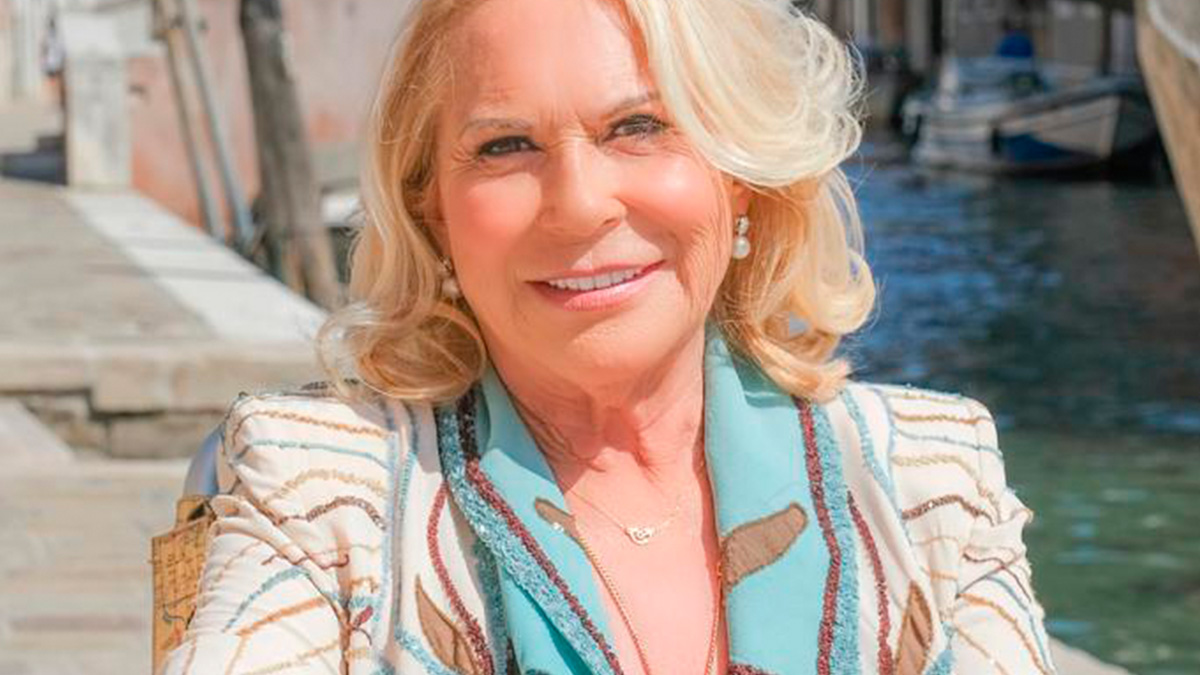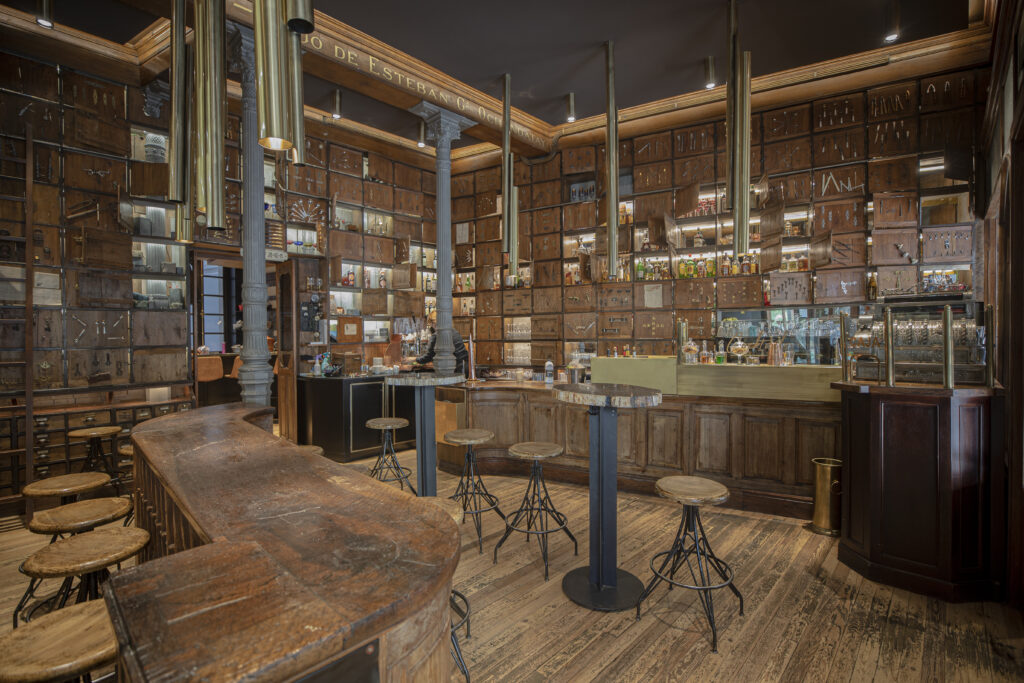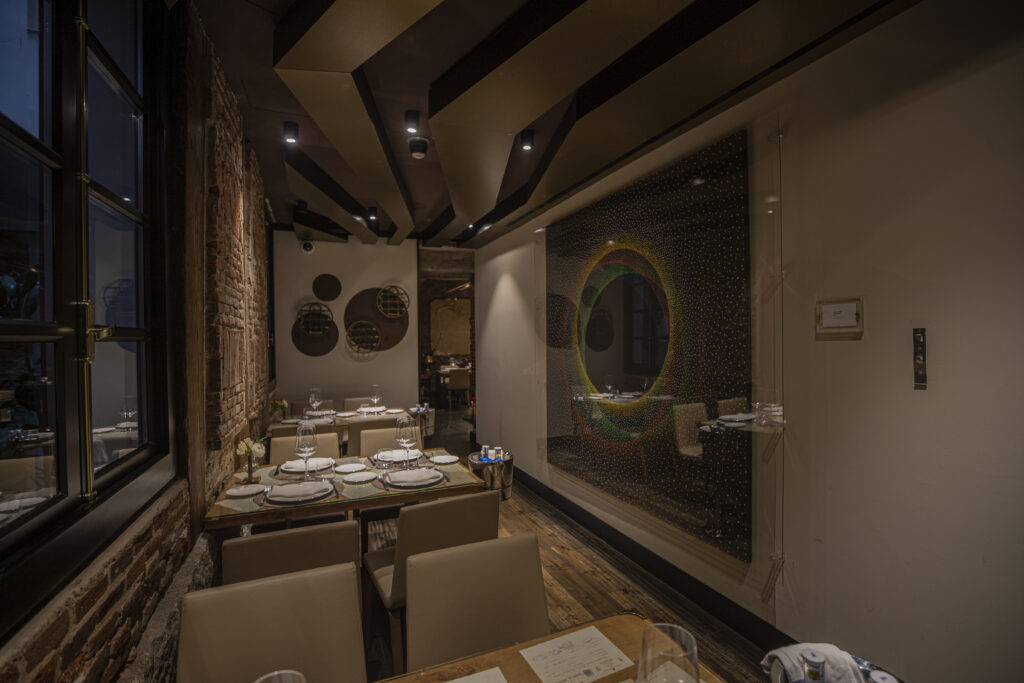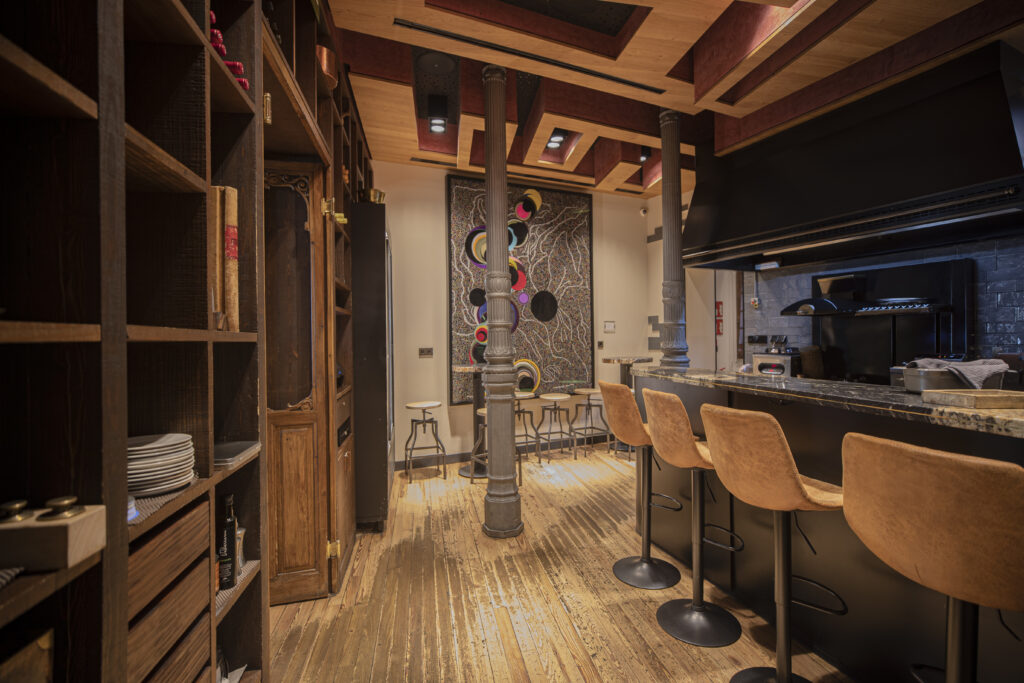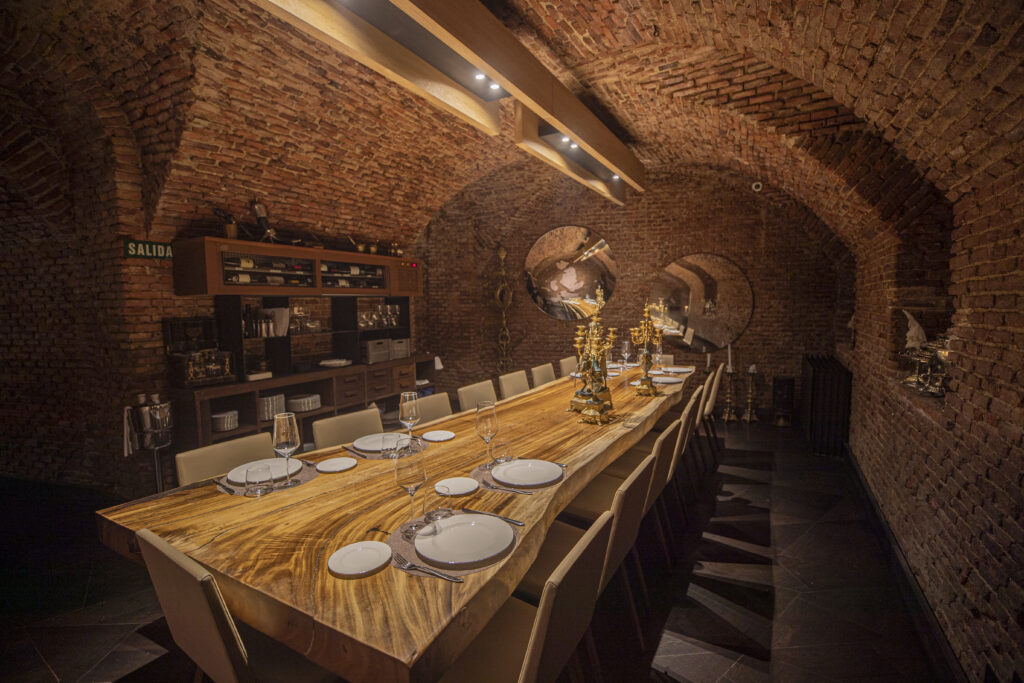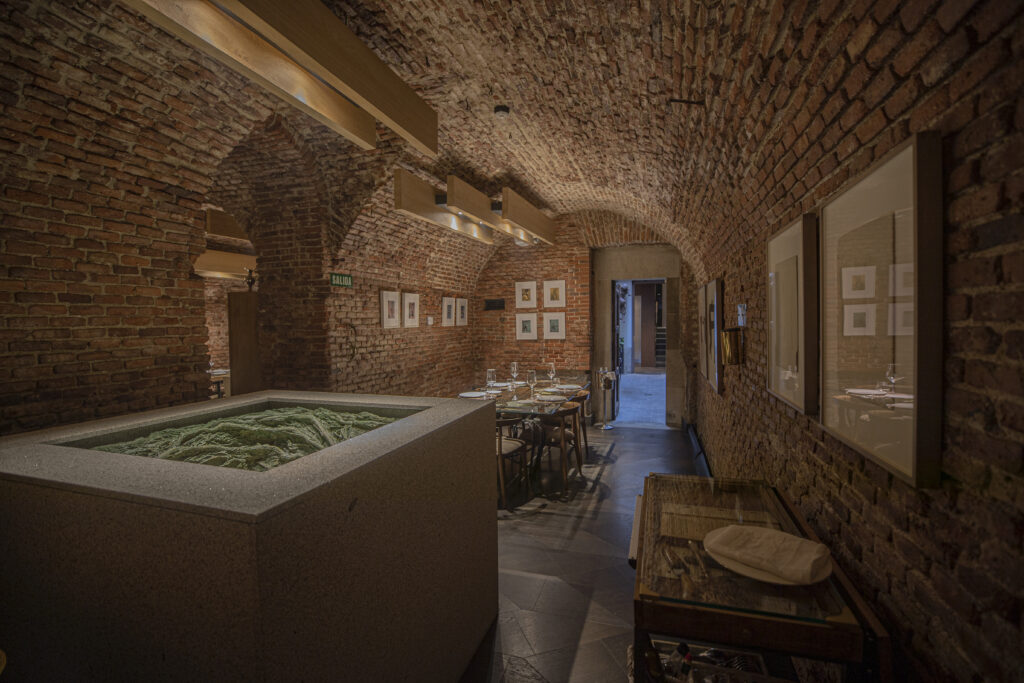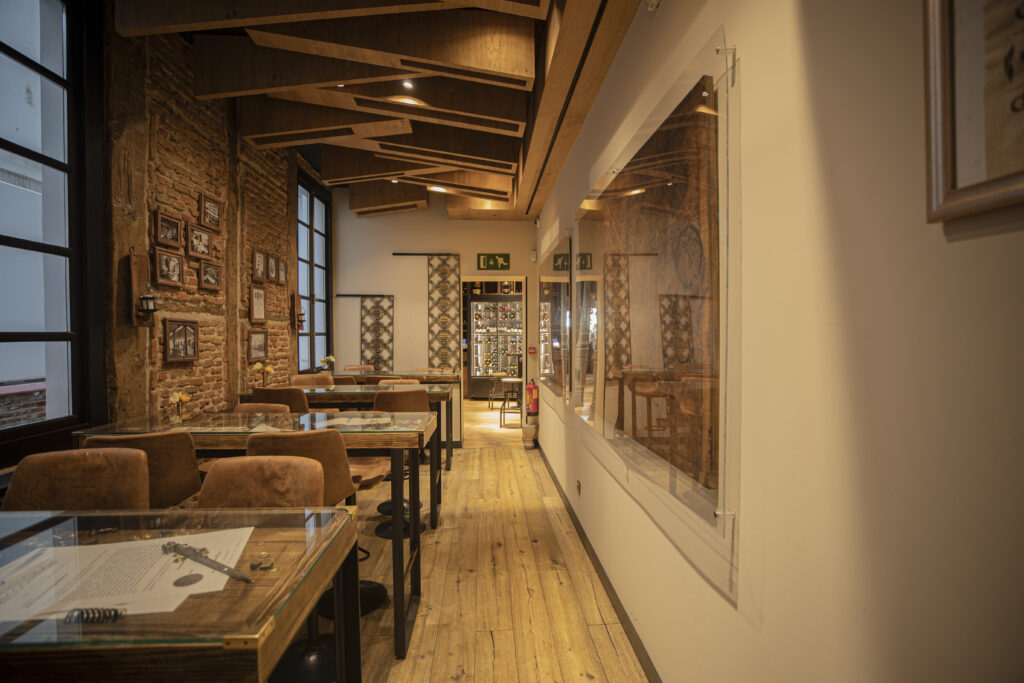Click here to read the Spanish version.
María Antonia Escapa has become an eminent figure in the world of business, gastronomy and art. Entrepreneur and investor in several real estate and food companies -such as the Coronita brewery- and member of the ‘International Patronage Council of the Reina Sofia Museum Foundation’, she holds countless titles and works of contemporary art.
The construction of ‘The Big Boss’
After a long career in various disciplines and sectors in which perhaps she did not find real passion, as when she was a makeup artist for film, theater and television, she came to feel and prolonged her fascination during her 20 years at the helm of a perfumery in León, which would even ascend to a larger scale when she entered the world of design, art and aesthetics. I was more interested in what had to do with design, everything that was a little more aesthetic, never numerical. My heart has always been more powerful than my head’.
Before opening Ferretería, Toñi had many other lives. In her town of León, she would also establish connections with another of her passions: gastronomy. There she organized gastronomic days based on the culinary sensibility she developed from childhood to adolescence at home, with her family, with ‘the women or disanderas who cooked wonderfully well’.
These roots, together with his faithful defense of Spanish products, but especially those from Leon, and the way of doing things in his homeland, would lay the foundations and influences of his gastronomic project.
Ferretería
That gastronomic and creative vision would end up being transferred to an old and small hardware store located at 57 Atocha Street in Madrid; which was born in 1888 by the hand of Don Esteban Garcia with ‘a fairly advanced vision and the idea of importing items that came from New York, Germany, England’.
Toñi was instantly captivated. It jumped out at me just because it was on an internet page, and it was love at first sight, and the place was absolutely dilapidated, but it seemed to me that the little that could be seen of that place, such as the counters, the cash registers, etc., had a lot of history to tell […] The treasure was the place itself.
Recently arrived in Madrid from León, she then embarked on this great challenge with the aim of reflecting her concept of León cuisine; having already maintained a previous link with it all by belonging to the Academia Leonesa de Gastronomía, which awarded her a prize last year as ‘Personaje leonés del año‘ (León Personage of the Year).
After a long period of restoration, the Leonese woman ended up opening the doors of Ferretería in 2015. There I decided to put my own collection of contemporary art, because I belong to the Reino Sofía Museum. It seemed very curious to me to put in a type of cuisine, within a classic order, based on those flavors and aromas that remind you of what was the food at home, giving it a little contemporary touch,’ she continues.
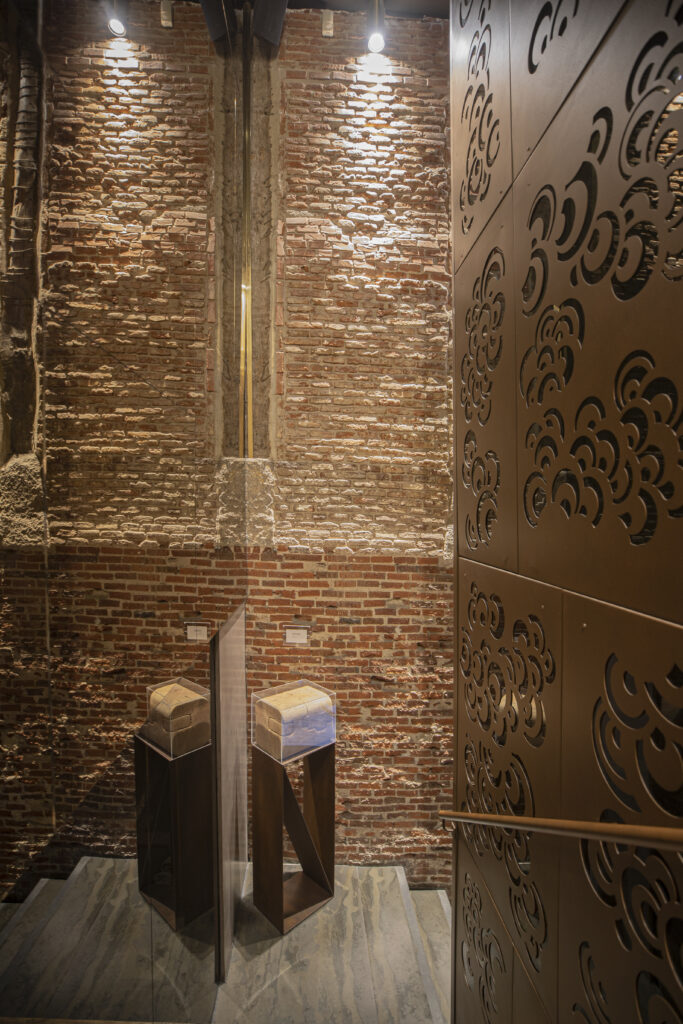
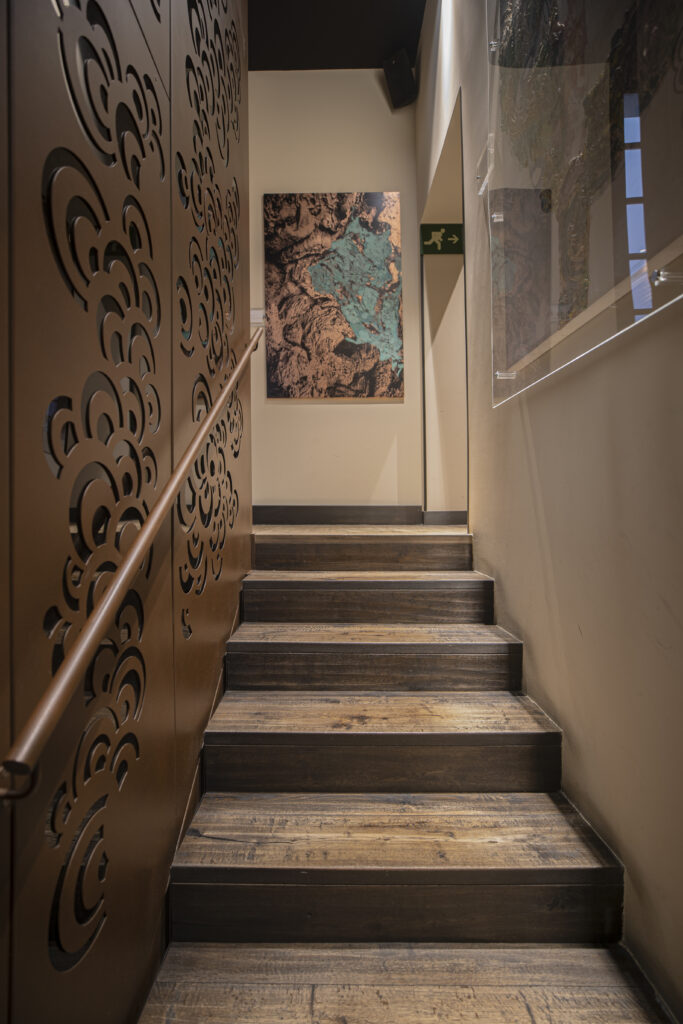
The restaurant thus transcended by its history, its antiques, and its concept of ‘culinary art gallery’ in which to appreciate gastronomy and creative works at the same level; because for Toñi ‘gastronomy is like the eighth art’.
Ferretería is presented as a place to share the experience. It is very important that the customer feels at home, that they feel at home, that they feel it as something of their own, that gatherings are created again, trying to recover that. I love to see people smile, and at the same time enjoy a product and a cuisine that is not at all sophisticated but is very tasty.’
The restaurant boasts a very marked identity, which can even be materialized as an extension of Toñi’s; of her inner world, personality, passions and influences. It stands out by itself, the place itself catches, it is as if it had a soul of its own. Maybe it is my own soul transferred, and the passion I put in it, since it mixes a lot of my essence, it gathers everything: gastronomy, contemporary art and antiques’.
Gastronomy as art
The art of ironmongery merges or combines with gastronomy in his restaurant, with certain menus in which the presentation establishes a link between the two disciplines. ‘Sometimes you play in the presentation with that artistic sense. Art for me is something that has to give you a very good feeling, so in the end that’s what you create.’
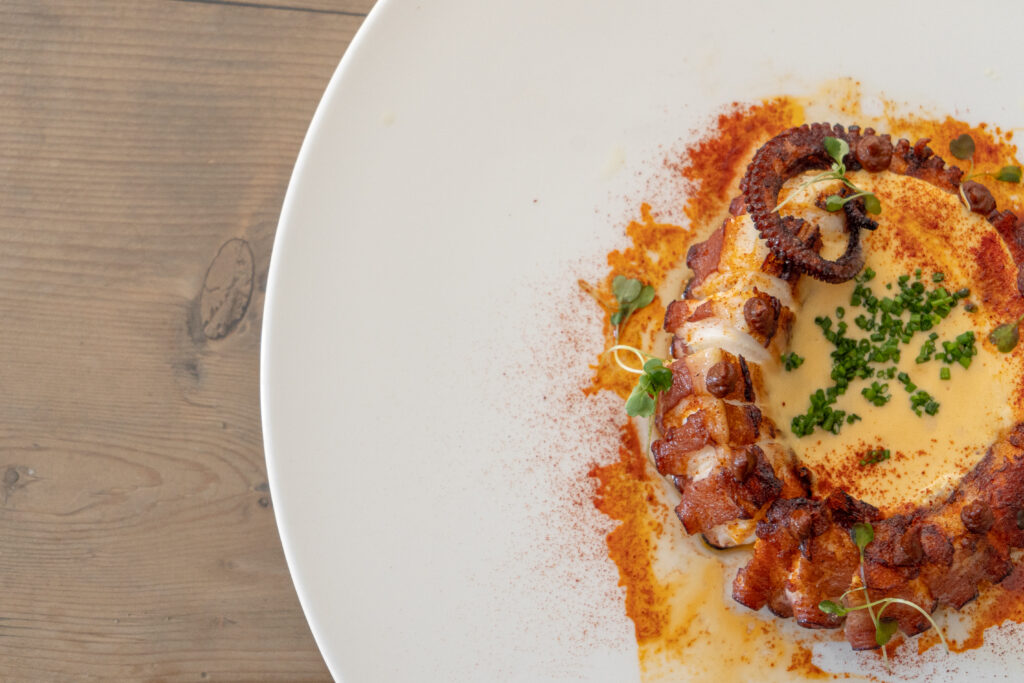
‘That pleasant sensation that comes from contemplating a work of art with the feeling of seeing a correctly presented dish, which is also pleasing to the eye and that in terms of aroma and flavor is the best possible.’
Culinary proposal
Just like its exhibition space and its pieces, its menu -which revisits Spanish tradition- also evolves with the passing of time and the seasons, as if they were temporary and permanent works of art. ‘Every change of season there is a change of menu, but then there are the ironmonger classics like the croqueta de cecina de león, de jamón, the buñuelo de morcilla that always remain.’
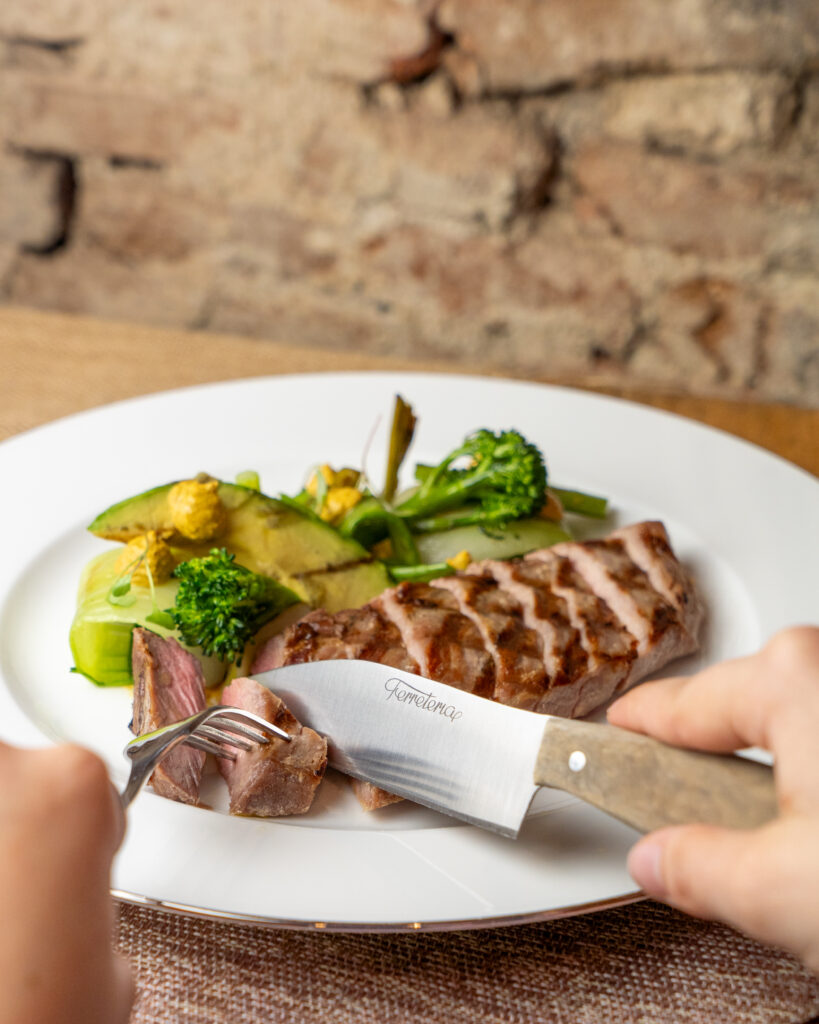
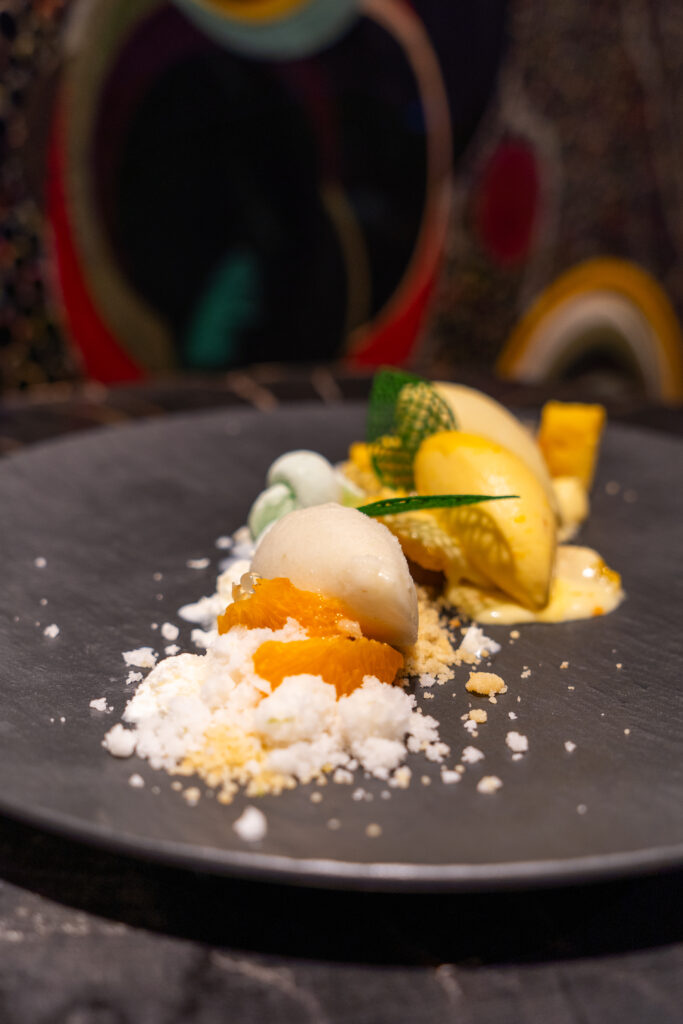
However, beyond gastronomy, the restaurant serves other types of experiences in its workshop, located on the upper floor, where different events or classes are held to learn how to prepare special dishes.
An eclectic work of antiques and contemporary pieces
At Ferretería, the curator of all the works installed in its different rooms is Toñi herself, who brings together an entire artistic collection that ranges from 18th century crockery and glasses to contemporary works by Warhol or Dalí to Chillida, Antonio López and even a well by Cristina Iglesias, as well as other artists with whom she promotes feminine art.
That’s crazy, everyone says to me, are you crazy? And I say yes, art is also for sharing. In the end, I just enjoy it and I think the artist loves to see his work reflected there.’
‘Hardware’ Hits
To the answer of the most epic moments that have taken place in Ferretería during these five years, Toñi responds: ‘Epic is every day, and every person who enters. I see it as epic, I don’t care about the person. For me, people from the neighborhood who are adorable are just as important as people from the art world, writers or well-known people’.
In addition to that thought, he has a policy of not talking about who passes through Ferretería in order to preserve his identity: from the diners of the ‘village’ to the royalty. In fact, the visit of the kings to his restaurant that Felipe VI chose to celebrate his birthday with Queen Letizia, was one of those moments to remember, and that Escapa has wanted to preserve from the inside.
It was a great surprise obviously, because it was absolutely unexpected, not warned. I know they must have felt comfortable, which is the only thing I ask of everyone’.
The resilience of Toñi & Ferretería
Known as ‘La Big Boss‘ -acquainted by her daughters and her own team-, Toñi has a long history as a powerful businesswoman in an industry mostly occupied by men, although she has always struggled to assert herself.
‘I’ve always been surrounded by gentlemen, but with my own decisions it wasn’t easy, in a man’s world. I just kept going. Certainly it has been a struggle, and until you open a niche for yourself it is not easy, but life is not easy for anyone. You just have to be rebellious, put a little grit and a lot of humor. To rebel against adversity, without conforming. You look at life and you put enough energy into it to say: ‘I’m here, have you heard that?
That philosophy of life with which it has made its way through resilience and activism is, in part, what has led to celebrate 5 years of success of Ferretería, to live an evolutionary history in which it has fought adversities such as a disease, a pandemic, deaths and waves as an expansion of other types of cuisine in which traditional cuisine was harmed.
However, Ferretería continued to get to where it is, without seeking exclusivity, if not the opening and democratization of its artistic and gastronomic work that would celebrate during its fifth anniversary on September 29. Life is to be celebrated, and it is a very proper place to celebrate’, says the founder.

